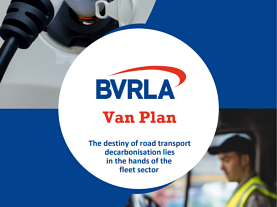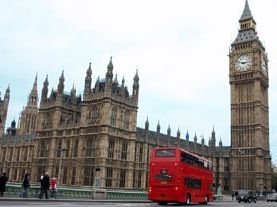The Government has today launched a consultation on its world-leading zero emission vehicle (ZEV) Mandate. The ZEV Mandate sets ambitious targets for the sale of new zero emission cars and vans, kickstarting a more competitive electric vehicle (EV) market.
The Mandate requires manufacturers to sell a rising proportion of their total UK sales as ZEVs each year to meet the UK’s 2030/2035 phase-out targets. Manufacturers are awarded credits for every ZEV sold into the UK.
The ZEV mandate will be introduced into the UK from January 2024. It will operate under the powers of the Climate Change Act.
There are four components to the scheme:
- ZEV mandate for cars (1) and vans (2)
- Non-ZEV CO2 standard for cars (3) and vans (4)
The Government is consulting on the detail of the scheme until May 2024, and the BVRLA will be liaise with members as it drafts its response. While some of the feedback the BVRLA had previously submitted to DfT has been acknowledged within the latest proposals, there is now more detail to comment on.
Qualifying ZEVs
Based on three factors
Emissions
- The vehicle must have 0 g/km CO2 according to the Worldwide Harmonized Light Vehicles Test Procedure (WLTP) and
- Not have any emissions of any other targeted gases under the Climate Change Act of 2008
- Other emissions i.e., PM are out of scope
Range
- Operational range of at least 120 miles according to the WLTP test cycle
Warranty
- A minimum of 8 years or 100,000 miles (whichever comes first) for traction batteries, hydrogen fuel cell stacks, and hydrogen tanks.
- For battery electric vehicles, the warranty must provide for replacement of the traction battery if it falls below 70% capacity during the covered period.
- A minimum of 3 years or 60,000 miles (whichever comes first) for the remainder of the vehicle.
Trajectories
The trajectories that the Government is proposing are for the period 2024, when the scheme is introduced, until 2030. New legislation will be introduced to cover 2031 – 2035 at a later point.
Cars
|
Year |
2024 |
2025 |
2026 |
2027 |
2028 |
2029 |
2030 |
|
Trajectory |
22% |
28% |
33% |
38% |
52% |
66% |
80% |
|
Future legislation to determine 2031-2035** |
|||||||
|
|
2031** |
2032** |
2033** |
2034** |
2035** |
|
|
|
|
84% |
88% |
92% |
96% |
100% |
|
|
BVRLA view: The trajectory for cars remains unchanged from when DfT previously consulted on this. Following the Chancellor’s announcement in Autumn 2022 which provided the certainty on BiK that the BVRLA had been seeking and had referenced in its earlier response on the mandate, the BVRLA agrees that the car trajectory proposed seems sensible.
Vans
|
Year |
2024 |
2025 |
2026 |
2027 |
2028 |
2029 |
2030 |
|
Trajectory |
10% |
19% |
22% |
34% |
46% |
58% |
70% |
|
Future legislation to determine 2031-2035** |
|||||||
|
|
2031** |
2032** |
2033** |
2034** |
2035** |
|
|
|
|
76% |
82% |
88% |
94% |
100% |
|
|
BVRLA view: The BVRLA is pleased to see that the trajectory for vans has been adapted, recognising our view that there would be limited viable hybrid van product to support the transition between 2030 and 2035. The BVRLA had also suggested that the early trajectory should remain low, reflecting the difficulties e-van operators face, but should ramp up from 2026/2027. This has also been reflected in the latest proposals. BVRLA hopes this mandate trajectory will bring competitively-priced, ‘fit for purpose’ product to the UK.
Additional Credits
Car Clubs
ZEVs registered to approved car club receive an additional 0.5 credits
Recognising the role of car clubs ‘which can decongest our roads and offer a zero-emission transport solution to a wider set of users’ each ZEV registered in an approved car club would earn an additional 0.5 credits. Qualifying cars or vans must remain in use in a car club for two years, and manufacturers may not earn extra credits for more than 5% of their total car or van sales.
To receive the credits, the car club purchasing a ZEV must meet certain criteria. These requirements to be an eligible car club will be set out by the scheme administrator ahead of 1 January 2024. At this stage, we expect these to reflect closely the relevant criteria set out by CoMoUK.
As one of the requirements to be an eligible car club, at the end of each year, car clubs participating in this scheme must provide a list of the ZEVs in operation which have received bonus credits, including their duration of operation, mileage and number of trips.
ZEVs under this scheme may be sold to another eligible car club; in that case, the remainder of the two-year responsibility will be transferred to the new operator.
BVRLA view: The association asked for additional credits (0.5) to be awarded to all vehicles used for shared mobility purposes. Whilst awarding additional credits for car club vehicles is a step in the right direction, we will be engaging with DfT and car club members on the specifics of the scheme during the consultation period. Your feedback and input are needed.
Wheelchair Accessible
Wheelchair accessible vehicles (WAV) receive an additional 0.5 credits
Any ZEV converted to a WAV would receive an additional 0.5 credits.
In cases where the WAV is a multi-stage vehicle, this bonus credit would be awarded in the scheme corresponding to the type approval category of the base vehicle (if it is a car or a van).
Also, Special Purpose Vehicles (SPVs) were originally out of scope of the mandate. Zero emission SPVs will now contribute a credit for an OEM, the same as other ZEVs.
BVRLA view: The BVRLA requested additional credits be given to WAVs and is delighted to see this included. Ensuring a just transition is critical and the BVRLA will consult with members to see if this needs to be extended to all vehicles for disabled users, and not only WAVs.
Banking & Borrowing
The Government is proposing that there will be some additional flexibility around OEMs borrowing credits against their future ZEV sales in the early years of the scheme, from 2024 to 2026.
BVRLA view: BVRLA will work with DfT to ensure that the market impact of banking and borrowing is fully understood. Members views on this are welcome.
Non-ZEV CO2 emissions & trading
Under the new regulatory framework, the primary objective for manufacturers will be to shift their production to ZEVs. Recognising that manufacturers have limited research and development budgets, this framework does not seek to encourage new investment to significantly increase the efficiency of the non-ZEV fleet. Rather, it seeks to ensure that the fleet does not become less efficient over time, with the risk that this erodes the carbon benefits from the ZEV mandate.
The baseline proposal is therefore for each manufacturer’s average CO2 emissions from their new non-ZEV cars and vans to remain flat across the duration of the regulation (2024-2030 in this stage) relative to their baseline target.
Recognising that manufacturers have invested in a variety of technologies to reduce their fleets’ overall CO2 emissions, the Government is proposing that during the first three years of the new framework (2024-2026), manufacturers may use excess allowances in the non-ZEV CO2 trading schemes to assist in compliance with the ZEV mandate targets. Specifically, 167 car CO2 allowances may be exchanged for one ZEV car credit and 216 van CO2 allowances may be exchanged for one ZEV van credit. The number of credits that may be earned in this way is limited to 25% of a manufacturer’s ZEV target in each year.
BVRLA view: The BVRLA will work with DfT to ensure the impact of these measures are understood. Member views on this are welcome.
Review
Reflecting on the pandemic, Russia’s invasion of the Ukraine and semi-conductor shortages, the Government has acknowledged the unpredictability of the global market and is proposing to keep the regulation under review to enable adjustments as appropriate and using established reporting routes to make information on its effectiveness publicly available.
BVRLA view: The BVRLA had stressed the importance of regular review of the scheme and is pleased to see this acknowledged. It is also reassuring that the Government has stated that it will issue a consultation and seek stakeholder feedback before making any significant modifications to these regulations. We look forward to working with DfT on this process.
Types of hybrids allowed 2030-2035
For a new hybrid car or van to be sold between 2030 and 2035 it will need to have a significant zero emission capability (SZEC). Government cannot yet provide a detailed definition of SZEC for cars and for vans. Therefore, this legislation does not define SZEC requirements. Government intends to set out an approach in mid-2023 and implement it in future legislation, though the UK Government’s commitment to ending the sale of all new petrol and diesel cars and vans by 2030 and all new non-zero emission cars and vans by 2035 is unchanged.
Other Announcements
Consumer Regulation
In Spring 2021, the Government consulted on how it could improve the consumer experience at public EV chargepoints in the UK. It sought views on four key areas: streamlining the physical and digital payment methods offered to consumers, open data, supporting a reliable charging network and ensuring pricing transparency.
A summary of the Government’s final policies is set out below. Further details can be found here.
|
Policy Area |
Final Policies |
|
Minimum Payment Consumers should be able to charge their vehicle and pay with ease, as they would for any other service. |
The Government will:
|
|
Payment Roaming Consumers should be able to access and pay at all public chargepoints easily with membership cards or smartphone apps. |
The Government will mandate:
|
|
Open Data All drivers should be able to locate available and working chargepoints easily when they need to charge their vehicle. |
The Government will:
|
|
Pricing Transparency We want consumers to be able to understand and compare pricing offers across the UK charging network to select the best available price. |
The Government will- mandate that:
|
|
Reliability EV consumers should feel confident that the UK charging infrastructure is reliable and easy to use.
|
The Government will mandate:
|
The Government will appoint an appropriate body to enforce the new regulations.
In addition, it will be working collaboratively with industry and consumer groups to gather more evidence on how best to ensure the public charging network is accessible and safe, and that appropriate protections are in place to meet consumer needs.
BVRLA view: These policies are extremely welcome and will go a long way to improve the consumer experience of using public charging. We will continue to work with OZEV as these policies are implemented and to ensure it recognises the recommendations made in the BVRLA’s latest Fleet Charging Guide.
LEVI
The government has launched the £381 million Local Electric Vehicle Infrastructure (LEVI) fund alongside an additional £15 million for the On-Street Residential Charging Scheme (ORCS). Taken together, the funding will support the installation of tens of thousands of new chargers across the country, increasing EV infrastructure in every area and ensuring the UK’s charging network can support the increasing number of EV drivers and those considering the switch.
The LEVI not only provide capital funding but also capability funding for local authorities, this is now available for financial years 2023 to 2024 and 2024 to 2025, building on the initial £8 million allocated for financial year 2022 to 2023.
BVRLA view: Anything that supports the rollout of EV charging infrastructure across the country is welcome. The BVRLA looks forward to working with OZEV and local authorities as they develop their EV infrastructure plans ensuring that these have a fleet focus and cater for all users and vehicle types.
2023 Green Finance Strategy
Alongside the transport and energy announcement, a 2023 Green Finance Strategy (the Strategy) has been released. This is a major document in its own right with many commitments. The Strategy represents the latest policy blueprint - developed by HM Treasury, the new Department for Energy Security and Net Zero, and Department for Environment, Food and Rural Affairs - to seize opportunities, mitigate risks and ensure the necessary finance flows to our net zero, energy security and environmental industries.
Some of the many specific commitments from Government in the Strategy are:
- The Government commits to consulting on the introduction of requirements for the UK’s largest companies to disclose their transition plans if they have them. To ensure parity between listed and private companies, as well as to ensure requirements are consistent and comparable across the economy, we expect to consult on the basis that these requirements could align closely with those of the FCA, including the ‘comply or explain’ basis. The consultation will take place in Autumn / Winter 2023.
- Work with International Sustainability Standards Board (ISSB) and set up a framework to assess ISSB standards for their suitability for adoption in the UK as soon as the final standards are published (expected summer 2023).
- Will launch a call for evidence on Scope 3 greenhouse gas (GHG) emissions reporting, to better understand the costs and benefits of producing and using this information.
- Will update the Environmental Reporting Guidelines, including for Streamlined Energy and Carbon Reporting, which provides voluntary guidance for UK organisations.
- Will work with industry partners to improve the approach to climate resilience assessment and disclosure through the development of adaptation metrics and guidance. Our final approach will be set out alongside our adaptation finance deliverables and action plan in 2024.
- Will deliver a UK Green Taxonomy – a tool to provide investors with definitions of which economic activities should be labelled as green.
We will work closely with industry and the regulator to implement Solvency UK, creating the potential for over £100 billion of productive investments from insurers in the next ten years, all while maintaining high standards of policyholder protection.
We will support local authorities to develop their ability to attract private investment through the work of the Local Net Zero Hubs and the UK Infrastructure Bank, as well as through promotion of programmes such as the Local Investment in Natural Capital programme and Investment Zones.
BVRLA view: The Strategy sets out a huge range of activities to match Government ambition in this space. Many of these areas are complex and will require detailed input from BVRLA members for the association to be able to push for appropriate rules and regulations. Members are encouraged to both engage directly with the BVRLA and sign up for the BVRLA’s new Compliance Forum to upskill in this area.
Download a copy of this briefing:




